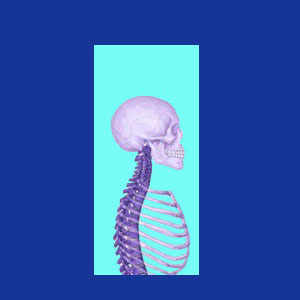
Cervical spinal curvature is the subject of much interest in the neck pain treatment sector. There are many diagnostic conclusions based on abnormal curvatures, loss of curvature and exaggerated curvatures which are used to explain the incredible diversity and epidemic incidence of neck pain symptoms. As a person who has been diagnosed with various spinal curvature irregularities myself, I always take a special interest in educating fellow patients about the real facts when it comes to neck pain and spinal curvature issues. If you have been diagnosed with any type of abnormal neck curvature, this is the place to be.
This resource section will provide a complete overview of all atypical spinal curvatures and how these may cause or contribute to symptoms.
Cervical Spinal Curvature Discussions
There are many topics relating to curvature-induced neck ache. Here are some of those which have captured my attention enough to write detailed articles about these anatomical alterations:
Scoliosis neck pain is theorized to exist from rare cases of scoliosis in the cervical region. Most cases of mild to moderate side to side curvature do not produce any pain or neurological symptoms at all, but many are mistakenly blamed for doing so.
Cervical scoliosis details scoliosis in the neck. Most side to side spinal curves exist lower in the backbone, but some can extend into the cervical region.
Cervical lordosis describes the degree of lordotic curvature in the neck. A normal neck will be lordotic, while hypolordosis describes a loss of curvature and hyperlordosis describes an exaggerated curve.
Loss of cervical lordosis is a diagnostic finding incredibly common on MRI reports of neck pain sufferers.
Reversal of cervical lordosis takes the loss of curvature one step further in which the curvature may actually become kyphotic, rather than lordotic.
Typical Spinal Curvature in the Neck
The typical cervical spine demonstrates a lordotic curvature, with the open end of the curve facing the back of the body. There should be absolutely no side-to-side curvature in a normal spine, although many people demonstrate mild curves in particular areas.
Noticeable side-to-side curvature anywhere in the spine is called scoliosis. This back and neck pain scapegoat is very common and is not generally the source of any pain or health issues in its minor forms.
Moderate to severe curvatures or any type, as well as severe to extreme loss of curvatures, can lead to very frightening symptoms, including pain, tingling, weakness and numbness in various parts of the anatomy. These cases are not the rule, but can occur in some patients with very significant spinal curvature conditions.
Cervical Spinal Curvature Advisory
Symptomatic side-to-side curvatures are very rare in the neck. Most exist in the upper, middle and lower back and some may only barely enter into the cervical spinal region. However, front-to-back curvature issues involving lordotic change are incredibly common and almost always seen in association with muscular spasm due to a neck pain concern.
It is crucial to understand the facts about spinal curvature to avoid following in my footsteps and suffering a terrible nocebo effect due to the poor diagnosis of what amounted to a completely normal and incredibly mild scoliosis issue.
Neck Pain > Cervical Spinal Curvature





